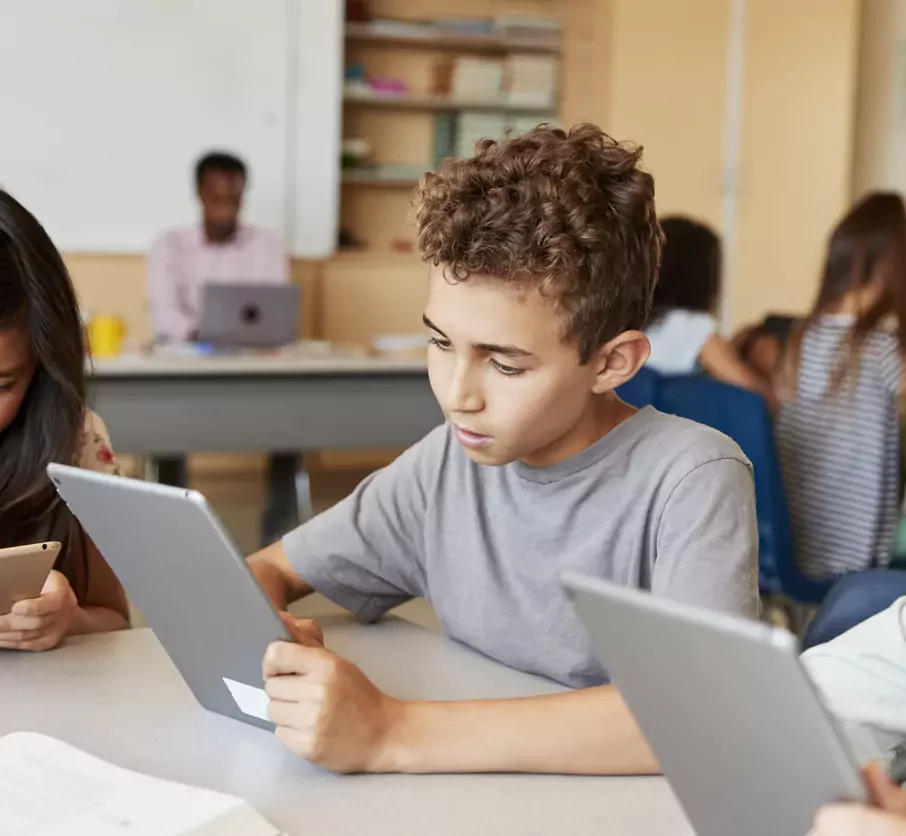Blended Learning
In recent years, one thing has become increasingly clear about education: While the traditional learning format may have its merits, there are teaching methods that improve upon the traditional methods, providing students with a more well-rounded, engaging, and challenging learning experience.
With greater access to technology, it would be a mistake to stick strictly to the old textbook-based style of teaching. However, it’s not necessary to dispense with traditional learning altogether. Instead, our courses offer a blended learning style that allows educators to use print, digital, or both formats in their courses.
Blended learning offers all of the strengths of both traditional and online learning while serving to remove many of their drawbacks. Students can benefit from the interactivity and structure that the traditional classroom provides, and they can also take advantage of the convenient and comprehensive approach that digital courses offer.

Blended learning is the most effective method of education currently available. Here are just a few reasons why.
Flexibility
Both the teacher and the student are afforded greater flexibility when they choose a blended learning approach. The teacher can decide which subjects they’d prefer to cover in the classroom, and the student can fit their coursework into their schedule more easily.
Engages All Learning Styles
Not all students learn effectively in a traditional classroom setting, nor do all students learn effectively in a strictly digital setting. Blended learning makes it easier for educators to engage every kind of learner, and it also increases overall educational outcomes by meeting students where they are.
Students Can Learn at Their Own Pace
The inflexible pace of the traditional classroom can hold some students back while stemming the progress of others. With blended learning, students have a better opportunity to take in the coursework at a pace that’s most comfortable for them.
Improved Student Engagement
The blended learning format gives a course a certain dynamic that isn’t available in strictly traditional or strictly digital formats. Varying the ways in which a student learns can help to keep them engaged and allow them to retain information more effectively.
